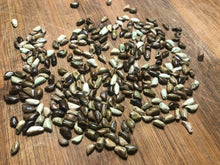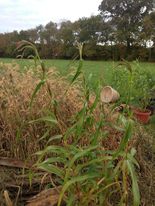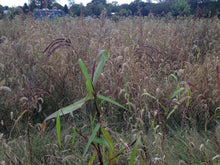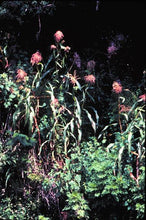Teosinte
Regular price
$4.00
Sale
Zea mays ssp. parviglumis
Origin: Mexico
Improvement status: Cultivated wild material
Seeds per packet: ~100
Germination tested 12/2023: 96%
Life cycle: Annual
Teosinte (pronounced tay-oh-SIN-tay) is the wild ancestor of corn. Native to Mexico and Central America, there are multiple species of this special plant, including a some that are perennial in the tropics. This species is native to the western escarpment of Mexico, from Nayarit to Oaxaca. It can cross with corn, but this is much more likely to occur with hand pollination than from just being grown in proximity to each other — and it's apparently much more likely for teosinte genes to make their way into a corn population than the other way around (due to a gene or gene cluster known as "teosinte crossing barrier1", or "tcb1"). So if you save corn seeds, or you know you have neighbors who do, you should think twice about growing teosinte near corn. On the other hand, if you're a plant breeder and you're interested in corn, this is certainly a fun plant to play around with.
Teosinte plants look very much like corn, only they are bushier, branched, and contain inconspicuous little spikes of seeds, rather than large cobs. The seeds themselves look like triangular little pebbles with a seam along some edges that appears fused together. Birds, including quail, chickens, turkeys, etc., readily eat up the seeds, but people can't really eat teosinte unless it's popped. But if properly matured and dried it can indeed pop just like popcorn! It's assumed that indigenous people in Mexico first discovered popped teosinte, and that began the millenia-long process of domestication that has led to such a wide diversity of corn today. (If you're interested in this process, there are still many unknowns, but what we do know is fascinating enough, and it involves phrases like "catastrophic sexual transmutation" and a cave in Tehuacán, Puebla state, where archaeologists found the oldest known corn, dating to some 7500 years ago.)
Our seed comes from our friends at Restoration Seeds in Oregon. This plant has some day-length sensitivity, so it might not mature in more northerly regions. Please let us know how it does for you!








